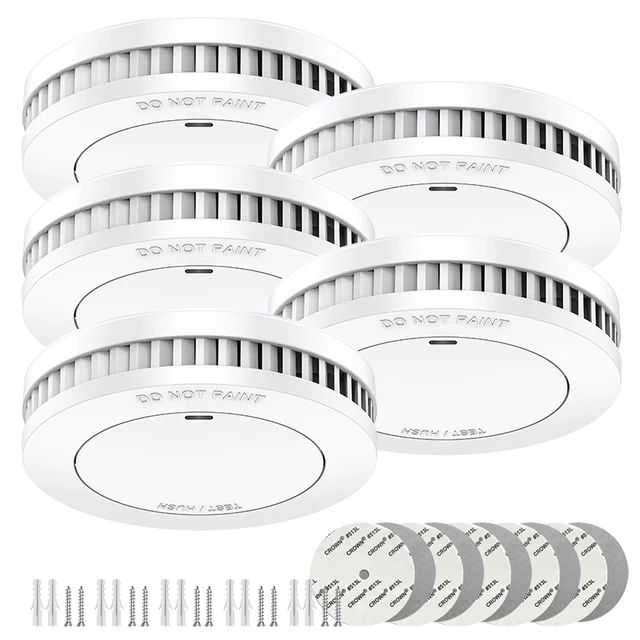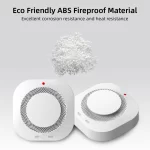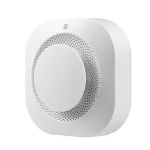Reasons Why Smoke Alarms Beep at Night
There can be various reasons why smoke alarms start beeping during the night.
- Low Battery Warning: The drop in room temperature overnight can trigger a low battery chirp.
- Dust or Dirt: Accumulated particles can block sensors, causing the alarm to sound off.
- Age of Alarm: Alarms over 10 years old may malfunction and need replacement.
- Exposure to Water or Paint: This can affect the alarm’s functionality.
- Temperature Fluctuations: Very cold temperatures can cause electrical charges to fluctuate, leading to false alarms.
- Humidity and Steam: Steam from showers or cooking can set off the alarm.
- Faulty Sensors: Sometimes, sensors may have defects causing intermittent beeping.
- Electrical Surges: Power surges can trip the breaker and cause hardwired smoke alarms to beep.
Understanding these common triggers helps to quickly assess and address the beeping, ensuring your smoke alarm functions correctly and your safety is not compromised.

Steps to Take When Your Smoke Alarm Sounds Continuously
When your smoke alarm sounds non-stop, it could signal an emergency. Firstly, evaluate your surroundings for any signs of smoke or fire immediately. If you detect any source of smoke or suspect a fire, evacuate everyone from the house and contact emergency services. If there’s no visible sign of danger, consider other causes. Check if other alarms like carbon monoxide detectors are also beeping. Inspect the smoke alarm for dust, dirt, or other obstructions that might trigger it, and clean it if needed. Remember, replacing the alarm is crucial if it’s older than 10 years or doesn’t stop beeping after these checks. Always install the alarm following the guidelines from the manufacturer to avoid similar issues in the future. Lastly, look for potential exposure to external factors like water, grease, or paint, as these can affect alarm functionality.
Intermittent Beeping: How to Address It
Intermittent beeping from your smoke alarm can be puzzling and annoying. Here are some steps you can take to address this issue:
- Check the Battery: Ensure the battery is the correct type and properly installed. A misaligned or wrong type of battery can lead to intermittent beeping.
- Examine the Alarm Age: If your smoke detector is close to or over 10 years old, replace it. Older alarms may start to malfunction, causing random beeping.
- Inspect for Damage or Faults: Look at your smoke alarm for any visible signs of damage or faults that might cause intermittent beeps.
- Consider Hardwired Factors: If your smoke alarm is hardwired, the backup battery could be low. Check and replace the battery as needed.
These steps should help stop the intermittent beeping of your smoke alarm, ensuring it works efficiently when needed.
Safe Methods to Stop Your Smoke Alarm from Beeping
Stopping a smoke alarm from beeping can be straightforward. Firstly, safely reach for the alarm using a step ladder. For a quick solution, press the ‘Test/Silence’ button on the unit. This often ceases the chirping immediately. If this does not work, you might need to access the battery compartment. Rotate the alarm counterclockwise to remove it from its base. Open the compartment, replace the battery, and check if this stops the beeping.
For hardwired smoke alarms, slightly different steps are required. Use a screwdriver to loosen the alarm wire screws or unclip the wire connector. Be cautious around exposed wires to avoid electrical shocks. If the beeping persists, consider calling a professional electrician. Remember to never leave the smoke detector disabled for long. Ensuring a functioning smoke alarm is crucial for your safety.

How to Properly Replace Smoke Alarm Batteries
To keep your smoke alarm functioning well, proper battery replacement is key. Here’s a step-by-step guide on how to replace the batteries in your smoke alarm safely and effectively:
- Turn Off the Alarm: Begin by switching off the main power supply if you have a hardwired smoke alarm.
- Remove the Alarm: Twist the smoke alarm counterclockwise or press the detachment tab, depending on the model, to release it from its mounting bracket.
- Open the Battery Compartment: Locate and slide open the battery drawer or unclip the battery panel. Some models have a security pin that needs to be pulled out.
- Take Out the Old Battery: Carefully remove the existing battery from the compartment.
- Press the Test Button: With the battery out, hold the test button for about 15 seconds to discharge any residual charge.
- Insert the New Battery: Place a fresh battery into the compartment, aligning the positive and negative ends correctly with the terminal markings.
- Close the Compartment: Ensure the battery drawer or cover snaps back securely in place.
- Reattach the Alarm: Restore the smoke alarm to the base and rotate it clockwise until it’s firmly attached.
- Restore Power and Test: If applicable, switch the power back on and press the test button on your smoke alarm to ensure it’s working.
By regularly checking and changing the batteries in your smoke alarm, you maintain a vital part of your home’s safety system. Keep in mind, if the alarm continues to beep after you replace the battery, it may be indicative of another issue, possibly warranting a replacement of the unit itself, especially if it’s nearing or has passed the 10-year mark.
Cleaning and Maintenance of Smoke Alarms
Regular cleaning and maintenance are key to ensuring your smoke alarm functions effectively. Here’s how to maintain these devices properly:
- Regular Cleaning: Dust can accumulate on your smoke alarm over time and block its sensors. Use a soft cloth or a vacuum cleaner with a soft brush attachment to gently clean the device. Every six months is a practical frequency for cleaning.
- Checking Battery Connection: Battery terminals can become corroded or blocked by dust and pollen. Removing the batteries, gently brushing off any residue, and correctly reinserting them can solve many connection issues.
- Handling Temperature and Humidity Changes: Be mindful of placement. Avoid installing smoke alarms near bathrooms or in places where temperatures fluctuate wildly. Such environments increase the likelihood of false alarms.
- Periodic Testing: Test your smoke alarm monthly by pressing the test button. This simple action ensures the alarm’s mechanisms are working.
- Replacing Units When Necessary: Replace your smoke alarm every 10 years or as soon as any malfunction is noticed. Newer models may also have enhanced features like better sensor technology or built-in carbon monoxide detection.
By following these straightforward maintenance steps, you can significantly reduce the occurrences of your smoke alarm beeping unexpectedly and ensure your household remains safe.
Understanding Different Smoke Alarm Sounds and What They Mean
Smoke alarms emit various sounds, each indicating a different issue. Here’s a breakdown of what these sounds mean for better understanding:
- Continuous Beeping: This usually means there is smoke or fire in your home. Check immediately for any signs of danger.
- Single Beep Every 30 Seconds to a Minute: Often, this sound signals a low battery. It might also indicate that the sensors are dirty or the unit needs replacing.
- Multiple Beeps: This can suggest a malfunction within the unit. If your smoke alarm detects carbon monoxide, multiple beeps may also point to high levels of this gas.
Identifying these sounds promptly helps ensure that you can react quickly and maintain safety in your home.

When to Replace Your Smoke Alarm
To ensure your safety, it is critical to know when to replace your smoke alarm. Here are key indicators that it’s time for a new unit:
- Age of the Alarm: If your smoke alarm is 10 years or older, it’s time for a replacement.
- Persistent Beeping: A unit that continues to beep despite battery changes or resets may be faulty.
- Faulty Test Results: When the test button fails to confirm the alarm’s readiness, consider replacement.
- Multiple False Alarms: Frequent false alarms can signal sensor problems requiring a new alarm.
- Visible Wear and Tear: Any signs of physical damage, such as cracks, warrant immediate replacement.
- Outdated Technology: Upgrade if newer models offer better detection or added features like carbon monoxide sensors.
Replacing smoke alarms timely is not just about stopping the nuisance of beeping; it’s a vital safety measure. Choosing the right time to replace can make the difference in an emergency situation. Remember to install new smoke alarms according to the manufacturer’s instructions and test them monthly to ensure functionality.


